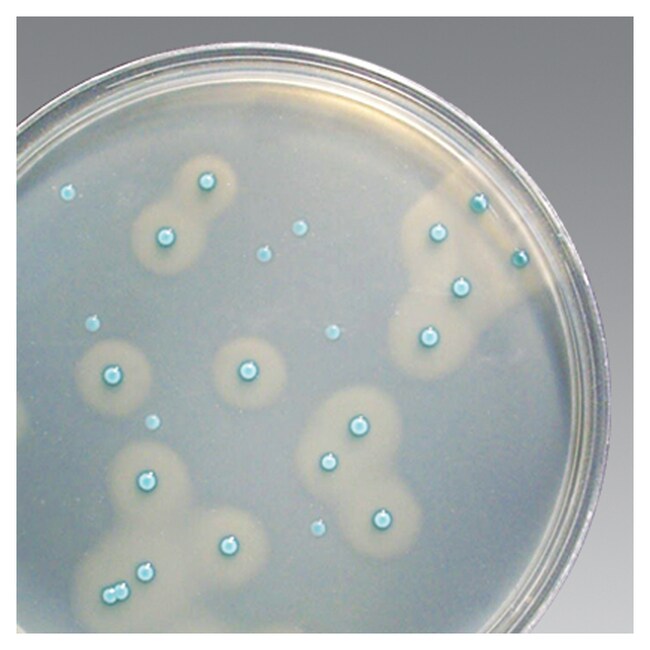Search Thermo Fisher Scientific
Brilliance™ Listeria Agar Base

Brilliance™ Listeria Agar Base
| Description | Brilliance Listeria Agar Base |
| Form | Powder |
| Product Type | Agar |
| Quantity | 500 g |
| Yield | For 7.4L medium |
| Unit Size | Each |
| Catalog Number | Specifications | Unit Size | Quantity | Price (USD) | |||||||||||||||||||||||||||||||||||||||||||||||||||||||||||||||||||||||||||||||||||||||||||||||||||||||||||
|---|---|---|---|---|---|---|---|---|---|---|---|---|---|---|---|---|---|---|---|---|---|---|---|---|---|---|---|---|---|---|---|---|---|---|---|---|---|---|---|---|---|---|---|---|---|---|---|---|---|---|---|---|---|---|---|---|---|---|---|---|---|---|---|---|---|---|---|---|---|---|---|---|---|---|---|---|---|---|---|---|---|---|---|---|---|---|---|---|---|---|---|---|---|---|---|---|---|---|---|---|---|---|---|---|---|---|---|---|---|---|---|
| CM1080B | Each | 500 g | Request A Quote | ||||||||||||||||||||||||||||||||||||||||||||||||||||||||||||||||||||||||||||||||||||||||||||||||||||||||||||
| |||||||||||||||||||||||||||||||||||||||||||||||||||||||||||||||||||||||||||||||||||||||||||||||||||||||||||||||
Description
Listeria monocytogenes is the most common pathogenic Listeria spp. and has been shown to be pathogenic to both man and animals. Some Listeria ivanovii strains also possess lecithinase activity and, although Listeria ivanovii are primarily pathogenic to animals, there are strains which have been shown to cause infection in humans.
Brilliance Listeria Agar uses the chromogen X-glucoside for presumptive identification of Listeria spp. This chromogen is cleaved by β-glucosidase which is common to all Listeria species. Other organisms that possess this enzyme, such as enterococci, are inhibited by the selective agents within the medium; lithium chloride, polymyxin B and nalidixic acid, while amphotericin inhibits the growth of any yeasts and moulds present in the sample. Listeria monocytogenes and pathogenic Listeria ivanovii are then further differentiated by their ability to produce the phospholipase enzyme, lecithinase. This enzyme hydrolyses the lecithin in the medium, producing an opaque white halo around the colony.
Brilliance Listeria Agar is a modification of the formulation described by Ottaviani and Agosti. As in the original formulation, the medium is designed to identify Listeria spp. based on their utilization of a chromogenic substrate. However, in this modification, the pathogenic Listeria spp. are then further differentiated by the detection of lecithinase (phosphotidylcholine phospholipase C (PCPLC) activity, rather than phosphotidylinositol phospholipase C (PIPLC) activity. Both enzymes, PCPLC and PIPLC, are associated with virulence in Listeria spp., and, therefore, the presence of either enzyme is a useful indicator of pathogenicity. Also available Chromogenic Listeria Selective Supplement, Part No. SR0227E and Chromogenic Listeria Differential Supplement, Part No. SR0228E.
Appearance
- Dehydrated medium: Straw coloured, free-flowing powder
- Prepared medium: Translucent, white gel
Quality Control
Positive Controls - Expected Results:
- Listeria monocytogenes ATCC™ 7644™ - Good growth; blue/green colonies with haloes
- Listeria innocua ATCC™ 33090™ - Good growth; blue/green colonies with no halo
Negative Control - Expected Results:
- Enterococcus feacalis ATCC™ 29212™ - Inhibited
The ATCC Licensed Derivative Emblem, the ATCC Licensed Derivative word mark, and the ATCC catalog marks are trademarks of ATCC™ and used under licence.
ONE Broth-Listeria Base is designated as “Irritant” and ONE Broth-Listeria Selective Supplement is designated as “Harmful.” For a full Material Safety Data Sheet (MSDS), contact your Fisher Scientific Customer Service Representative.
Do not use ONE Broth-Listeria Base or ONE Broth-Listeria Selective Supplement beyond the stated expiration dates, or if the products show any sign of deterioration.
Brilliance Listeria Agar can be used following a variety of enrichment procedures i.e. ISO, NMKL, BAM, etc. The following is a suggested protocol using ONE Broth-Listeria. This method has been validated by AFNOR and been shown to give equivalent results to ISO 11290-1:19971,5. 1. Add 25g of food sample to 225mL of ONE Broth-Listeria (CM1066 & SR0234) and stomach for a minimum of 30 seconds to mix the sample.
2. Incubate the broth without agitation at 30°C for 24 ± 2 hours.
3. Gently agitate the bag then, using a microbiological loop, remove 10μL and inoculate onto an Brilliance Listeria Agar plate and incubate at 37°C for 24 ± 2 hours. Examine the plate for blue colonies with and without opaque white halos.
4. When testing meat samples, incubate negative plates for a further 24 ± 2 hours and examine again.
5. Confirm presumptive colonies on the agar plate as Listeria monocytogenes or Listeria spp. by appropriate methods e.g. Gram stain, catalase, Oxoid O.B.I.S. mono ID0600M, Oxoid Listeria Latex Test Kit DR1126A, Microbact Listeria 12L MB1128A. General References:
1. Oxoid Folio No. 1059. 2. Ottaviani, F., Ottaviani, M. and Agosti, M. (1997) Quimper Froid Symposium Proceedings, P6 A.D.R.I.A. Quimper (F) 16-18 June 3. Cummins, A.J., Fielding, A.K. and McLauchlin, J. (1994) Listeria ivanovii infection in a patient with AIDS. Journal of Infection 28, p89-91 4. Data on file at Oxoid. 5. ISO 11290-1:1997 Horizontal method for the detection and enumeration of Listeria monocytogenes Part 1: Detection Method.